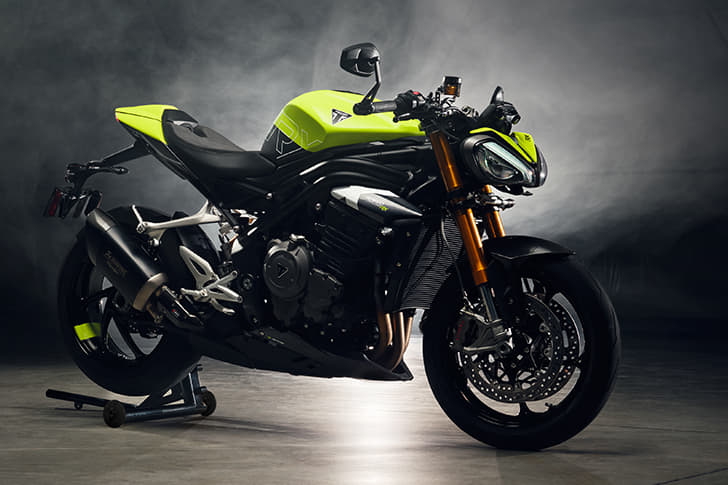Triumph has launched an updated version of the Speed 400, adding a new member to its 400 family: the Speed T4. While heavily based on its predecessor, it also incorporates some notable differences that allow Triumph to price it lower, making it the entry point for the British brand. Let's examine their similarities and differences.
Speed 400 vs Speed 4T: Similarities
Both bikes have the same tubular frame chassis and a bolted-on subframe. They also use the same liquid-cooled 399cc TR-series engine, though there are some key differences that you’ll find out soon. The wheel sizes are the same, with 17 inches at both ends, as are the brake disc sizes (300mm/270mm) and the overall design language. Even areas like instrumentation and switchgear are shared between the two bikes.

Triumph Speed 400 vs Triumph Speed 4T: Differences
Both bikes are built around the same frame, but several key differences set them apart, starting with the front suspension. The Speed 400 comes equipped with a golden upside-down fork, while the T4 uses a conventional telescopic setup. The Speed 400 also features adjustable levers and a radial front brake caliper as standard, whereas the T4 has non-adjustable levers and an axially mounted front caliper. In terms of mirrors, the T4 opts for conventional designs, while its sibling sports more stylish bar-end mirrors.
The most notable difference can be seen in power and torque. While both bikes are powered by the same 399cc TR-series engine, they have drastically different states of tune. The Speed 400 delivers 40hp and 37.5Nm of torque, outperforming the T4's 31hp and 36Nm. However, this doesn’t tell the full story, as the T4 produces more torque than the Speed 400, between 3500rpm to 5500rpm, emphasising low-speed and low-RPM rideability.

The 4T weighs slightly more, tipping the scales at 180 kg – just 1 kg heavier than the Speed 400. The company attributes this difference largely to the different tyres on each bike. The T4 is fitted with MRF Zapper bias-ply tyres (110/70-R17 at the front, 140/70 R17 at the rear), while the Speed 400 comes with chunkier Vredestein radial tyres featuring larger sidewalls (110/80 R17 at the front, 150/70 R17 at the rear).
The final difference is the price. As you’d expect, the more powerful and feature-rich Speed 400 is pricier – starting at 2.40 lakh compared to the 4T’s price tag of Rs 2.17 lakh.




































